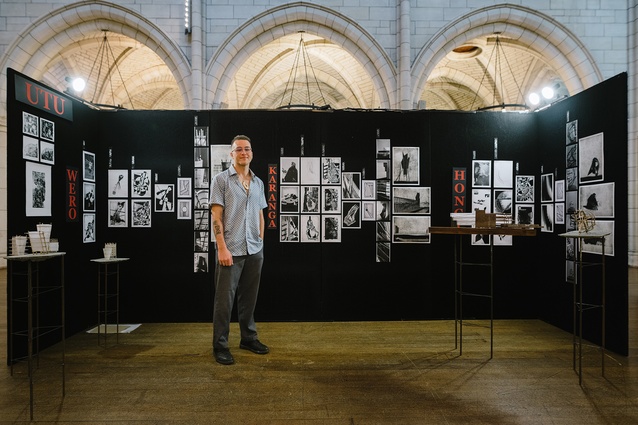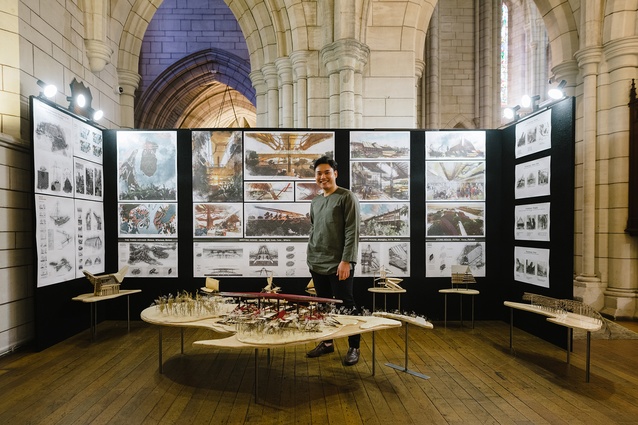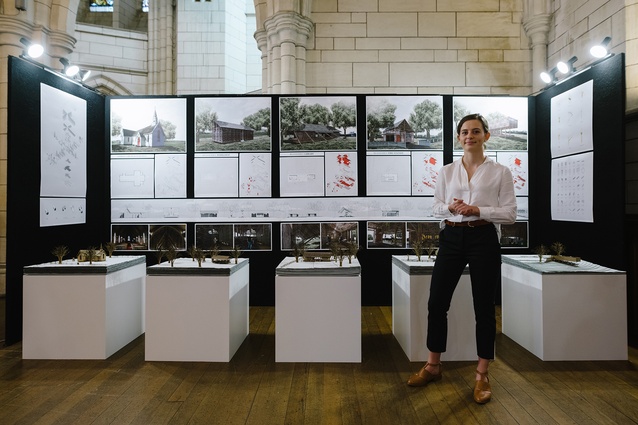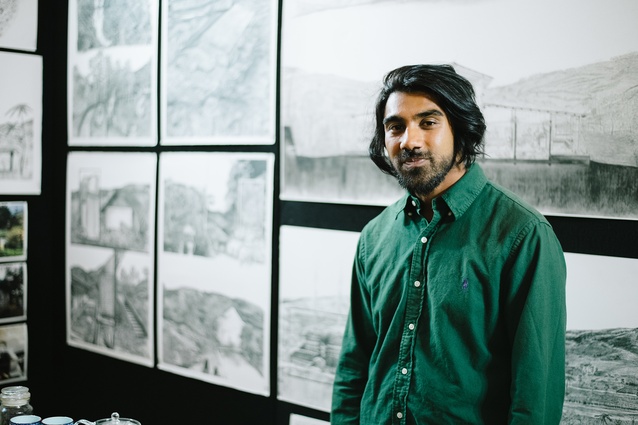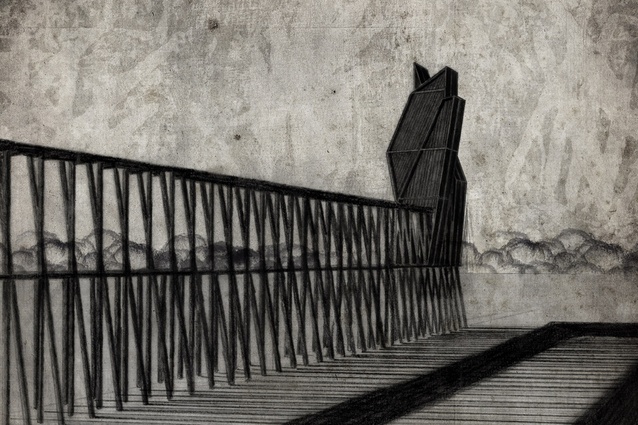2020 NZIA Student Design Awards: Winner announced
Victoria University student Ben Tunui (Ngāti Awa, Te Ātiawa) won the top award at this year’s Te Kāhui Whaihanga Resene Student Design Awards with his project Utu, which he says “draws architectural form and spatial composition from Māori rituals of encounter and questions how elements of contemporary tikanga Māori can be expressed architecturally”.
The Awards were judged by NZIA president Judi Keith-Brown, Nelson architect William Samuels and Ngā Aho Te Wai Pounamu co-chair Keri Whaitiri (Ngāti Kahungunu, Ngāi Tahu), who unanimously named Tunui the winner. Graduating students from the architecture schools at the University of Auckland, Victoria University of Wellington and Unitec presented their projects over two days, including a public viewing, at St Matthew-in-the-City in Auckland before prizes were given out on 3 December.
“We quickly agreed Ben’s thesis presentation marks the emergence of a genuinely important new voice in New Zealand architecture,” Keith-Brown said. “Ben’s clear proposition, methodical interrogation of his idea, creative exposition of his findings and beautiful yet tangible final designs reveal an already impressive architectural mind at work.”
“This is a visionary architecture that is immersed in whakapapa, wairua, tikanga, kawa – and aroha,” said Whaitiri in the official citation for the winning project. “Māori architecture and material culture has long been subject to colonial definition through western instruments of cartography, anthropology, history and theory. This project offers a staged methodology that allows for innovative and experimental development of propositions as described in a rich and alluring selection of images, drawings and models.”
The jury also gave out three highly commended prizes to Izzat Ramli and Abby-Jane Taylor from the University of Auckland, and Dimitri Thamel from Unitec. They said of Ramli’s project, which outlined a climate response for Jakarta, “Izzat’s project makes a clear case for the idea of transience and impermeability as a response to climate change and sea level rise.”
Taylor’s project won over the jury by “meticulously cataloguing every component of the deconsecrated Christ Church at Pukehou, Hawke’s Bay, and reassembling them into three theoretical new forms that sensitively and beautifully enhance their community while retaining the materiality of the church,” the Institute says.
“This project clearly identifies notions of assembly, disassembly and adaptability that allow for recognition of the value of heritage material while ‘re-designating’ it as a renewable, reconfigurable resource,” said the judges.
Thamel’s project was inspired by a 2018 trip to Sri Lanka and a meeting with Indian Tamil tea pickers. In response, he designed “an architecture that provides healthy, dignified, flexible housing for this community”. The jury said, “Dimitri’s drawings are exquisite and, combined with his empassioned storytelling approach, made this a deeply affecting project. We’ll never drink a cup of tea in the same way again.”
Each year, the NZIA Resene Student Design Awards selects from 12 fifth-year projects from students across the country. To see more information about all the finalists’ projects, head to nzia.co.nz.

